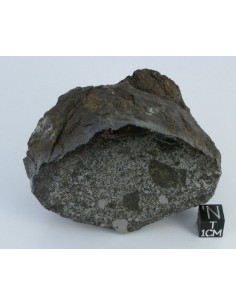- Lunar Meteorites
- Martian Meteorites
- Meteorite Classification
-
Buy Meteorites By Classification
- Lunar A
-
Iron Meteorites
- Campo Del Cielo Meteorites For Sale
- Meteor Crater Meteorite
- Meteorites From The Meteor Crater
- IIE Iron Meteorites
- Odessa Meteorite
- Gibeon Meteorite
- Octahedrites
- Hexahedrites
- Ataxites
- Silicated Iron
- Sikhote Alin Meteorite
- IAB Iron Meteorites
- IIAB Iron Meteorites
- IIC Iron Meteorites
- IID Iron Meteorites
- IIF Iron Meteorites
- IIG Iron Meteorites
- IIIAB Iron Meteorites
- IIICD Iron Meteorites
- IIIE Iron Meteorites
- IIIF Iron Meteorites
- IVA Iron Meteorites
- IVB Iron Meteorites
- Ungrouped Iron Meteorites
- Muonionalusta Meteorite
- IC Iron Meteorites for sale
- Canyon Diablo Meteorite
- Henbury
- IIIA Iron Meteorites
- Cape York Meteorite
- Unclassified Iron Meteorites
- Toluca Meteorite
- brenham Meteorite
- Gibeon Meteorites For Sale
- Plessitic Octahedrites
- Glorieta Mountain Iron Meteorite
- Seymchan Meteorite
- Wabar Meteorite
- La Caille Meteorite
- Lunar mare Basalt, lunar B
-
Carbonaceous Chondrites
- Carbonaceous chondrites CB
- Carbonaceous chondrites CI
- Carbonaceous chondrites CO
- Carbonaceous chondrites CM
- Carbonaceous chondrites CV
- Carbonaceous chondrites CR
- Carbonaceous chondrites CK
- Ungrouped Carbonaceous chondrites
- Carbonaceous Chondrites CH
- Carbonaceous Chondrite Grouplet
- Sutter's Mill Meteorite For Sale
-
Pallasites
-
Main Group Pallasites
- Esquel pallasite
- Imilac pallasite
- Fukang Pallasite
- Glorieta Mountain pallasite
- Krasnojarsk pallasite
- Marjalahti Pallasite
- Brahin Pallasite
- Huckitta Pallasite
- Seymchan Pallasite
- Brenham Pallasite
- Admire Pallasite
- Albin Pallasite
- Krasnoyarsk Pallasite
- Springwater Pallasite
- Ahumada Pallasite
- Imilac Meteorite
- Fukang Meteorite
- Krasnojarsk Meteorite
- Eagle Station Pallasites (ESP)
- Pyroxene Pallasites (PXP)
- Pallasites for sale
- Esquel Meteorite
- Eagle Station Meteorite
-
Main Group Pallasites
-
Chondrites
-
Achondrites
- Meteorite Thin Sections
- Stony-Iron Meteorites
- Tektites
- LUN-M, Mingled Mare
- Types of Meteorites
- LUN G (Lunar Gabbro), lunar meteorites
- Moon Meteorites
- pallasite
- Martian Meteorite
- Unique meteorites sold
- Videos of Meteorites
- lunar meteorite hunters
Filter By
Mesosiderites
Mesosiderites For Sale
Mesosiderites
Mesosiderites
General: The mesosiderites are named for the Greek words mesos for “middle” or “half”, and sideros for “iron”, meaning “half iron”. In fact, they are typical stony-iron meteorites, most consisting of approximately equal portions of nickel-iron metal and silicates.
Description & Mineralogy: Texturally, mesosiderites are a complex mixture of a nickel-iron metal portion and a heavily brecciated silicate portion, consisting of mostly pyroxene and plagioclase. Strangely, the silicates are obviously evolved igneous rocks, representing the crust of an achondritic parent body. They are quite similar to eucrites, diogenites, and other members of the HED group, even plotting on the same oxygen isotope fractionation line. However, the metal in mesosiderites is similar to group IIIAB irons, obviously representing the core of a distinct, differentiated asteroid, genetically unrelated to the precursor of the eucritic and diogenitic portion.
Formation history & Origin: This suggests a complex formation history for the mesosiderites and their parent body. One theory has them formed by the collision of two differentiated asteroids, allowing the still liquid core of one asteroid to mix with the solidified crust of the other. This scenario includes the collisional disruption and gravitational reassembly of at least one of the asteroids – the one that later became the parent body of the mesosiderites. It is still heavily debated whether the HED parent body, 4 Vesta, actually represents one of these asteroids.
Members: Excluding all probable pairings, the mesosiderite group comprises about 58 distinct members, while seven members represent witnessed falls. Famous members of the mesosiderite group are the witnessed falls of Estherville, Iowa, USA, in 1879, and Lowicz, Poland, in 1935. Another renowned member is Vaca Muerta, a find from Chile. Several hundred individuals of this well-preserved mesosiderite have been recovered from its strewn field in the Atacama Desert, making it the most common mesosiderite in private and public collections.
There is 1 product.
Showing 1-1 of 1 item(s)

